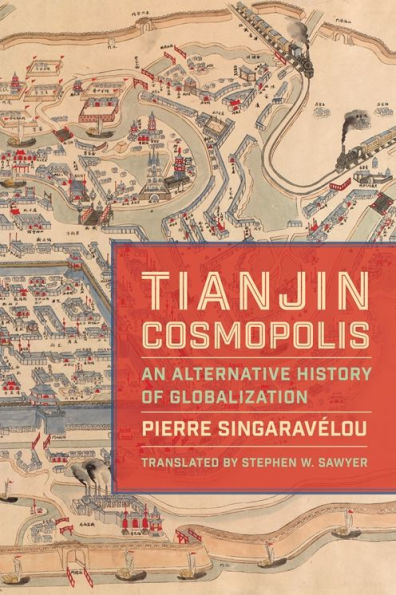At the turn of the twentieth century, the city of Tianjin was the diplomatic capital of the Middle Kingdom, where foreign consuls met Chinese dignitaries, and a hub of commerce and culture. Yet in the eyes of foreigners, the city remained provincial. After the tumult of the Boxer Rebellion, however, Tianjin transformed, when a little-known international political project turned it for a time into one of the most cosmopolitan places in the world.
Pierre Singaravélou tells the story of Tianjin’s emergence as a transnational metropolis, arguing that the city’s experience challenges conventional narratives of the origins of globalization. He focuses on the aftermath of the Boxer Rebellion, when a number of imperial powers established an international military government that sought to modernize the city and its environs. Under its reign, people from all over the West and Asia flocked to Tianjin, in a whirlwind of commercial and cultural exchange. This provisional government embarked on ambitious public works and public health projects, attempting to transform not only the city’s infrastructure but also its residents’ behavior—all while the imperial powers seized large foreign concessions. Singaravélou traces the many tensions of the global city: between accommodation and resistance for Tianjin’s residents, between colonization and internationalization within the provisional government, and between cooperation and competition among the imperial powers. Bringing together global and local perspectives, Tianjin Cosmopolis offers a new vantage point on the imperial globalization of the early twentieth century.
At the turn of the twentieth century, the city of Tianjin was the diplomatic capital of the Middle Kingdom, where foreign consuls met Chinese dignitaries, and a hub of commerce and culture. Yet in the eyes of foreigners, the city remained provincial. After the tumult of the Boxer Rebellion, however, Tianjin transformed, when a little-known international political project turned it for a time into one of the most cosmopolitan places in the world.
Pierre Singaravélou tells the story of Tianjin’s emergence as a transnational metropolis, arguing that the city’s experience challenges conventional narratives of the origins of globalization. He focuses on the aftermath of the Boxer Rebellion, when a number of imperial powers established an international military government that sought to modernize the city and its environs. Under its reign, people from all over the West and Asia flocked to Tianjin, in a whirlwind of commercial and cultural exchange. This provisional government embarked on ambitious public works and public health projects, attempting to transform not only the city’s infrastructure but also its residents’ behavior—all while the imperial powers seized large foreign concessions. Singaravélou traces the many tensions of the global city: between accommodation and resistance for Tianjin’s residents, between colonization and internationalization within the provisional government, and between cooperation and competition among the imperial powers. Bringing together global and local perspectives, Tianjin Cosmopolis offers a new vantage point on the imperial globalization of the early twentieth century.

Tianjin Cosmopolis: An Alternative History of Globalization
384
Tianjin Cosmopolis: An Alternative History of Globalization
384Related collections and offers

Product Details
| ISBN-13: | 9780231549608 |
|---|---|
| Publisher: | Columbia University Press |
| Publication date: | 07/08/2025 |
| Series: | Columbia Studies in International and Global History |
| Sold by: | Barnes & Noble |
| Format: | eBook |
| Pages: | 384 |
| File size: | 34 MB |
| Note: | This product may take a few minutes to download. |
